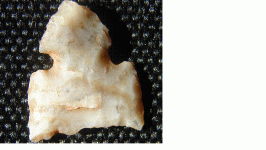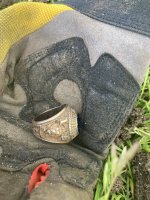I have a place that has yielded tons of artifacts... for other people. Its pretty much been picked out, and dosnt get any deep plowing anymore. I would like do some digging and sifting at the edges of some the sites, where it has never been plowed. Some of the camps are on the bank of an old creek (it was straightened and relocated in the 1950's). I want to do the square holes like I see in pics. I know this is probably time consuming but I have plenty of that lol. And also have a friends 5 kids that would love to help. Also would there be any legal issues in Iowa, as long as I have permission from owner and not digging in burial sites? Probably would try first on the edges with the most flakes. Any other ways to find the spots that would be most productive? Theres 2 main camps from what I can tell from flakes, both on old creek with corn/beans and about 10 ft of brush/timber till the drop off at the creek bank. Thanks for any advice. 

Upvote
0









